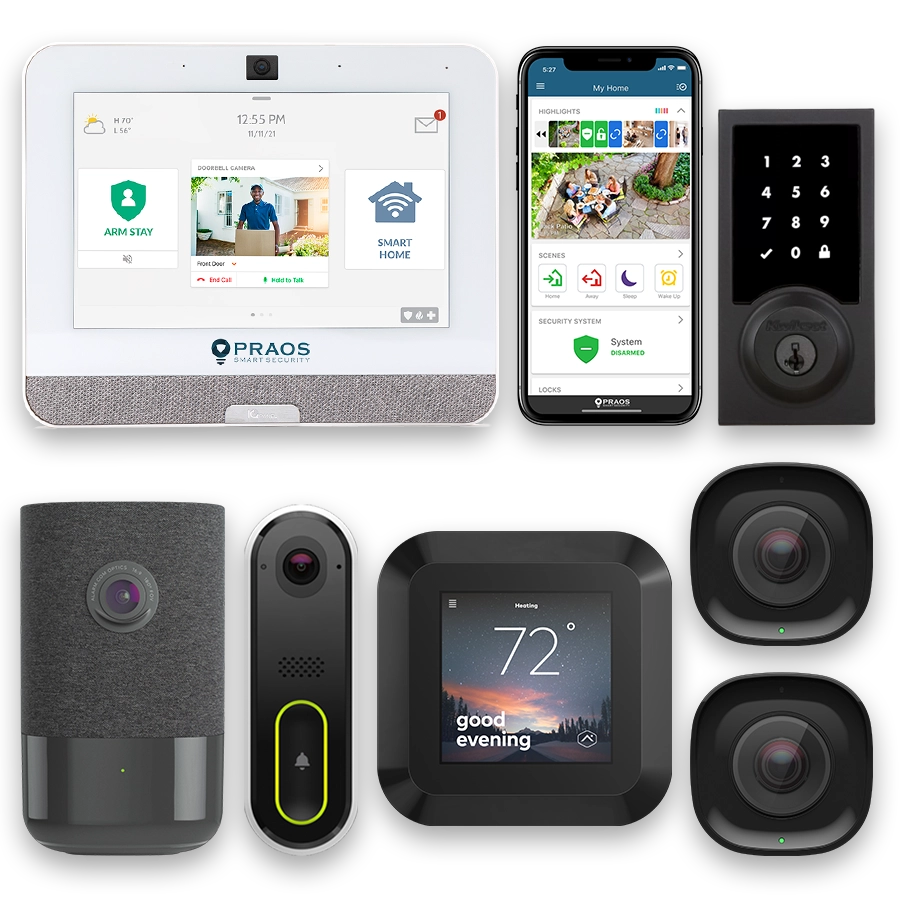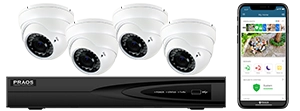Introduction to Smart Homes in Richmond
Richmond, a vibrant city steeped in history and culture, is progressively embracing the benefits of smart home technology. As homeowners and residents seek to enhance their living environments, understanding the basics of smart homes becomes increasingly crucial.
A smart home refers to a residence equipped with a network of interconnected devices that automate and control a variety of functions, such as lighting, heating, security, and entertainment systems. These devices can be managed remotely through smartphones, tablets, or voice assistants, providing convenience, energy efficiency, and improved security.
In Richmond, the adoption of smart home technology has been influenced by several factors, including advancements in wireless technology, the increasing availability of smart devices, and the growing desire for sustainable and energy-efficient living. This trend is part of a broader movement towards connected living, where technology integrates seamlessly into everyday activities.
A key appeal of smart homes lies in their ability to provide customizability and adaptability. Homeowners can tailor their smart home systems to meet specific needs and preferences, choosing from a wide range of devices and automation options. Popular smart home categories include:
- Smart lighting: Automated lighting systems that can be adjusted for intensity, color, and timing to suit various moods and activities.
- Smart thermostats: Devices that manage heating and cooling systems more efficiently, offering potential savings on energy bills.
- Home security systems: Comprehensive security setups featuring smart locks, cameras, and sensors to enhance home safety.
- Voice assistants: AI-powered devices like Amazon Echo or Google Home that centralize control of other smart devices via voice commands.
The integration of smart home technology can lead to significant improvements in daily living. Automated systems can perform routine tasks, notify homeowners of irregularities, and enhance overall home management. For instance, smart irrigation systems can adjust watering schedules based on weather forecasts, ensuring optimal garden maintenance.
As Richmond continues to grow and evolve, the increasing accessibility of smart home technology presents an opportunity for residents to modernize their homes. By understanding the fundamentals and benefits of smart homes, Richmond’s residents can make informed decisions about adopting this technology to improve their quality of life.
Essential Components of a Smart Home
Setting up a smart home involves integrating a variety of devices that enhance convenience, security, and energy efficiency. Understanding the essential components are the first step in creating a functional smart home in Richmond. This chapter will cover some of the key elements required:
1. Smart Hub
The smart hub is the central command unit of your smart home. It allows various devices to communicate with each other and can often be controlled through a single app. Popular options include:
- Amazon Echo
- Google Nest Hub
- Apple HomePod
2. Smart Lighting
Smart lighting systems allow you to control the lighting in your home remotely or through voice commands. They can also be scheduled to turn on or off at specific times to save energy. Leading brands include:
- Philips Hue
- LIFX
- TP-Link Kasa Smart
3. Smart Thermostats
Smart thermostats help manage heating and cooling more efficiently. They learn your temperature preferences and can be adjusted remotely. Some of the top options are:
- Nest Thermostat
- Ecobee SmartThermostat
- Honeywell Home T9
4. Smart Security Systems
Security is a crucial aspect of any smart home. Modern systems offer features like remote monitoring, motion detection, and notifications. Popular products include:
- Ring Alarm Security Kit
- SimpliSafe Home Security System
- Arlo Pro 3
5. Smart Locks
Smart locks provide keyless entry to your home and can be controlled via smartphone, making it easier to manage access for family members and guests. Common brands are:
- August Smart Lock
- Schlage Encode
- Yale Assure Lock
6. Smart Appliances
Smart appliances, such as refrigerators, ovens, and washing machines, can be controlled and monitored remotely, offering additional convenience and efficiency. Notable manufacturers include:
- Samsung
- LG
- GE Appliances
7. Smart Plugs
Smart plugs turn ordinary appliances into smart devices, allowing you to control them remotely and set schedules. Leading products include:
- Belkin WeMo Mini
- TP-Link Kasa Smart Plug
- Amazon Smart Plug
Summary of Essential Smart Home Components
| Component | Examples |
|---|---|
| Smart Hub | Amazon Echo, Google Nest Hub, Apple HomePod |
| Smart Lighting | Philips Hue, LIFX, TP-Link Kasa Smart |
| Smart Thermostats | Nest Thermostat, Ecobee SmartThermostat, Honeywell Home T9 |
| Smart Security Systems | Ring Alarm Security Kit, SimpliSafe Home Security System, Arlo Pro 3 |
| Smart Locks | August Smart Lock, Schlage Encode, Yale Assure Lock |
| Smart Appliances | Samsung, LG, GE Appliances |
| Smart Plugs | Belkin WeMo Mini, TP-Link Kasa Smart Plug, Amazon Smart Plug |
Choosing the Right Smart Home Devices
When setting up a smart home in Richmond, selecting the right devices is critical for achieving a seamless and efficient system. The following are some key considerations when choosing smart home devices:
1. Compatibility
Ensure that the devices you choose are compatible with your existing systems and other smart devices. Many smart home devices operate under specific ecosystems such as Amazon Alexa, Google Assistant, or Apple HomeKit. Check product specifications to confirm compatibility before purchase.
2. Network Requirements
Most smart home devices rely on Wi-Fi connectivity, but some use other protocols such as Zigbee or Z-Wave. Assess your home’s Wi-Fi strength and coverage. You may need to invest in a stronger router or a mesh Wi-Fi system to ensure consistent connectivity throughout your home.
3. Energy Efficiency
Opt for devices that have been designed with energy efficiency in mind. Look for products that have the Energy Star label or other energy-efficient certifications. This can help reduce your home’s overall energy consumption and potentially lower your utility bills.
4. Scalability
Consider the scalability of your smart home system. Choose devices from manufacturers that offer a wide range of products, so you can easily expand your system in the future without compatibility issues.
5. User Reviews and Ratings
Read user reviews and ratings to get an idea of the performance and reliability of various smart home devices. Well-reviewed products are more likely to meet your expectations in terms of functionality and durability.
Here are some of the main types of smart home devices to consider:
- Smart Lighting: Smart bulbs, switches, and plugs that can be controlled remotely or set to schedules.
- Smart Thermostats: Devices that allow for more precise control of your home’s heating and cooling systems, often leading to energy savings.
- Smart Security Systems: Cameras, doorbells, locks, and sensors that enhance your home’s security and provide peace of mind.
- Smart Speakers and Hubs: Devices that act as voice-activated assistants and central control points for other smart devices.
- Smart Appliances: Refrigerators, washing machines, and other household appliances that offer remote control and monitoring features.
- Smart Irrigation Systems: Systems that optimize watering schedules based on weather conditions and soil moisture levels.
By carefully choosing your smart home devices with these considerations in mind, you can create a well-integrated system that enhances convenience, security, and energy efficiency in your Richmond home.
Setting Up and Configuring Your Smart Home
Setting up and configuring your smart home in Richmond involves a series of steps to ensure that all devices work seamlessly together. Proper configuration is essential for optimizing the functionality and convenience that smart devices provide.
The first step in setting up your smart home is selecting a reliable central hub or controller. This hub acts as the brain of your smart home, connecting and managing all your devices. Popular options include Amazon Echo, Google Home, and Apple HomeKit. These hubs offer compatibility with various devices and assist in centralized control through voice commands or apps.
Once you have chosen your central hub, the next step is to install and configure the individual devices. Here is a table that lists common smart devices and the basic steps for their setup:
| Device | Basic Setup Steps |
|---|---|
| Smart Thermostats |
|
| Smart Lights |
|
| Smart Security Cameras |
|
Configuring your smart home devices to work with each other involves linking them through the central hub. This can typically be done within the hub’s app by adding and grouping devices, setting up automation rules, and customizing settings for each device. For example, you might configure your smart lights to turn on when your security camera detects motion after dark.
Another important configuration step is ensuring that your Wi-Fi network is robust and capable of handling multiple devices simultaneously. Consider these tips to optimize your network:
- Place your router in a central location to ensure even coverage.
- Use a mesh Wi-Fi system to eliminate dead zones.
- Ensure your network uses WPA3 encryption for maximum security.
- Regularly update your firmware to keep the network and devices secure.
Finally, regularly check for firmware updates for all your smart devices. These updates can provide enhanced security, new features, and improved compatibility with other devices. Most smart home devices will notify you via their respective apps when updates are available, and it’s essential to install them promptly.
Establishing a well-configured smart home in Richmond ensures that you fully benefit from the convenience, efficiency, and security that modern smart devices offer. By following these steps, you can create a seamless and integrated smart home experience.
Ensuring Security and Privacy in Your Smart Home
Ensuring the security and privacy of your smart home in Richmond is crucial. As smart devices become more integrated into daily life, they also present potential vulnerabilities. This chapter will provide guidelines to secure your smart home effectively.
Secure Your Network
The foundation of a secure smart home lies in protecting your network. Follow these steps to ensure your network is secure:
- Change Default Settings: Always change the default router username and password to prevent unauthorized access.
- Use Strong Passwords: Create complex and unique passwords for your Wi-Fi network and devices. Avoid using easily guessable information.
- Enable WPA3 Encryption: If available, use WPA3 encryption for your Wi-Fi. If not, WPA2 is the next best option.
- Regular Firmware Updates: Ensure your router’s firmware is always updated to protect against known vulnerabilities.
Device Security
Each smart device in your home should be individually secured. Here’s how:
- Change Default Device Passwords: Similar to your router, change the default passwords on all smart devices.
- Firmware and Software Updates: Regularly check for and install updates for all smart devices. These updates often include security patches.
- Two-Factor Authentication: Wherever possible, enable two-factor authentication (2FA) for an added layer of security.
Regular Monitoring and Audits
Continually monitoring and auditing your smart home’s security can prevent unauthorized access:
- Network Monitoring Tools: Utilize network monitoring tools to detect unusual activity within your home network.
- Review Device Connections: Periodically review which devices are connected to your network and disconnect any unfamiliar ones.
Privacy Considerations
Privacy is a significant concern with smart home devices. Here are steps to protect your privacy:
- Read Privacy Policies: Before installing any device, read its privacy policy to understand what data is collected and how it is used.
- Disable Unnecessary Features: Turn off features that are not needed, such as location tracking or voice recording.
- Control Data Sharing: Adjust settings to limit the data shared by your devices. Opt out of data sharing where possible.
By following these guidelines, you can effectively secure your smart home in Richmond, ensuring peace of mind and protecting your personal data.
Future Trends in Smart Home Technology
As we venture into the future, smart home technology continues to evolve at a rapid pace. Understanding emerging trends can help Richmond’s residents make informed decisions when enhancing their smart homes.
One notable trend is the growing integration of Artificial Intelligence (AI) in smart home systems. AI enables devices to learn from user behaviors, offering a more personalized and efficient experience. For example, AI-powered thermostats can learn a household’s schedule and adjust temperatures accordingly, reducing energy consumption.
Another significant trend is the rise of Internet of Things (IoT) devices. IoT involves connecting everyday objects to the internet, allowing them to send and receive data. This integration leads to greater interoperability among devices, creating a more cohesive smart home ecosystem. For instance, smart refrigerators can communicate with smart ovens to suggest recipes based on available ingredients.
Voice-activated assistants, such as Amazon’s Alexa and Google Assistant, continue to gain popularity. These assistants are becoming more sophisticated, offering expanded functionalities and improved natural language processing. Additionally, more smart devices are being designed to be compatible with these voice assistants, enhancing their usefulness in the home.
The adoption of 5G technology is set to revolutionize smart homes by providing faster and more reliable internet connections. This improvement will lead to smoother operation of smart devices, particularly those requiring real-time data processing, such as security cameras and smart locks.
Another emerging trend is the emphasis on energy efficiency and sustainability. Many new smart home devices are designed to minimize energy usage and reduce the household’s carbon footprint. Smart lighting systems, for example, use energy-efficient LEDs and can be programmed to turn off automatically when not in use.
Below is a table summarizing some of these future trends in smart home technology:
| Trend | Description |
|---|---|
| Artificial Intelligence (AI) | Personalizes and enhances user experiences by learning behaviors. |
| Internet of Things (IoT) | Creates interconnected ecosystems for seamless device communication. |
| Voice-Activated Assistants | Offer expanded functionalities and improved natural language processing. |
| 5G Technology | Provides faster and more reliable internet connections for smarter device operation. |
| Energy Efficiency and Sustainability | Focuses on reducing energy consumption and environmental impact. |
By staying informed about these trends, homeowners in Richmond can better prepare for the future of smart home technology, ensuring their homes remain at the forefront of innovation and efficiency.





